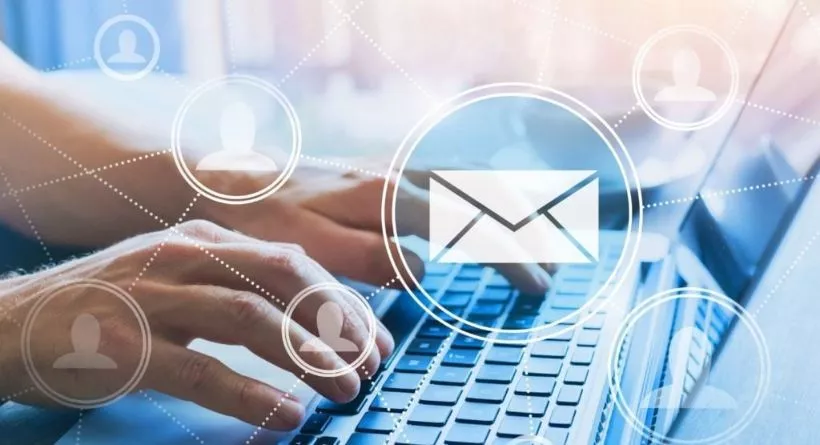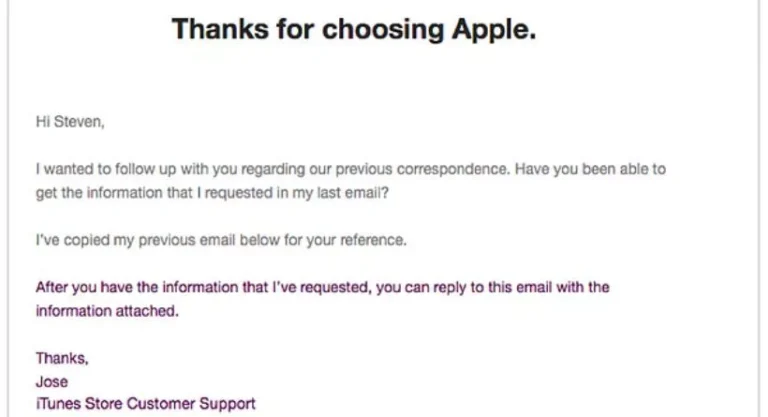You’ve just had a great sales call, the prospect is interested, and now it’s time to nail the follow-up email. But there’s a catch – you’re unsure how to write an effective follow-up email that will capture attention, convey your message, and most importantly, lead to the next steps. This can feel like a daunting task, but you are not alone.
We understand your struggle, and this blog post is here to provide solutions. In the upcoming sections, you’ll find an arsenal of 10 highly effective follow-up email templates, designed to help you navigate through a multitude of sales scenarios. Each template specifically addresses different circumstances, from reigniting a prospect’s interest to expressing gratitude post-purchase.
The Art and Importance of Follow-Up Emails
Why Follow-Up Emails Matter in Sales
In the world of sales, communication is everything. But it’s not just about reaching out; it’s about the ‘how’ and the ‘when.’ This is where follow-up emails play a critical role. They serve as a bridge between you and your potential customers, keeping the dialogue open, refreshing their memory about your offerings, and gently nudging them toward making a decision.
Follow-up emails can be the difference between a prospect that goes cold and a lead that converts. They show your potential customer that you’re interested in making a sale and invested in building a relationship. Your persistence and professionalism reflected through these emails can often be the key to securing the deal.
Understanding the Role of Follow-Up Email Templates
Now, let’s delve into the role of follow-up email templates in this process. Templates are not just time savers; they provide a consistent framework that can be adapted to various sales situations. A good follow-up email template is flexible and customer-centric. It balances the line between persistence and patience, ensuring your message is received, not repelled.
Different Scenarios in Sales and the Need for Personalized Follow Ups
When to Customize Your Follow-Up Emails
Sales is a dynamic field, each prospect presents a unique scenario and thus calls for a personalized approach. A generic follow-up email might be overlooked, but one that’s tailored to your prospect’s needs can capture their attention.
For instance, if a potential customer showed interest in a specific product during a sales call, your follow-up email should include details about that product. Alternatively, if they expressed certain concerns, address those in your follow-up. Customizing your emails in such a manner shows the prospect that you were attentive and care about their needs.
How Personalization Affects the Outcome
Personalization does more than just address your prospect by their name. It’s about understanding their needs, their pain points, and delivering a solution that suits them best. A personalized follow-up email can increase your reply rate and accelerate the sales process.
Unveiling 10 High-Converting Sales Follow Up Email Templates
Follow Up After Initial Contact or Meeting
You’ve made the first impression, but your job doesn’t end there. A follow-up email template is key to keeping the conversation going and creating lasting relationships. Remember that first contact is akin to planting a seed. It’s in the follow-up where you water this seed, ensuring growth and thriving relationships.
Let’s consider an example. You’ve just had an engaging meeting with a potential client. Rather than leaving it up to fate, use an email follow-up to reinforce the points discussed. This can be as simple as “I appreciated our discussion about your company’s goals. Here’s the article I mentioned that delves into this further.”
Follow Up After Sales Presentation
A sales presentation can feel like a one-way conversation. With a thoughtful follow-up email, you can transform it into an ongoing dialogue. This is where you provide extra value, clarify uncertainties, and keep your product or service fresh in their minds.
Follow Up After Networking Events
Networking events offer the chance to meet numerous potential contacts. But without follow-up, these can be fleeting interactions. A personalized email after the event can help you stand out from the crowd, reminding them of who you are and what you bring to the table.
For example, “It was great meeting you at the Tech Conference yesterday. I found our chat about AI development fascinating, and I’d love to continue the conversation over a coffee if you’re available next week.”
Follow Up After Receiving No Response
A lack of response doesn’t necessarily signify disinterest. People get busy, and emails get overlooked. A polite and patient follow-up email template can draw their attention back to your initial message, providing another opportunity to respond.
Follow Up After Purchase to Show Gratitude
A customer’s journey shouldn’t end at purchase. A follow-up email expressing gratitude can foster customer loyalty, creating a lasting, positive impression of your business.
Follow Up Asking for Referrals
Referrals are a potent tool for business growth. An email follow-up can tactfully request these, ensuring you do so in a manner that respects your client’s time and connections.
Follow Up for Upselling or Cross-Selling
Upselling and cross-selling require a delicate balance. Your follow-up email template should offer additional value without pressuring the customer.
Follow Up for Customer Feedback or Testimonials
Feedback is the lifeblood of improvement. A follow-up email can encourage customers to share their experiences, helping you to refine your service.
Follow Up for Renewal or Subscription Updates
Keeping customers informed about their subscription or renewal details fosters transparency and trust. An effective follow-up email can maintain these open lines of communication.
For example, “Just a quick note to let you know that your subscription is due for renewal next month. We’ve added some exciting new features we think you’ll enjoy.”
Follow Up After a Proposal
Proposals often require thoughtful consideration. A follow-up email template can gently remind your potential client of your proposal, providing them with an opportunity to ask any lingering questions.
A Guide to Personalizing Your Follow-Up Email Templates

Crafting a successful follow-up email template involves striking a balance. You’re walking the tightrope between professionalism and personalization, all while ensuring your email doesn’t end up in the spam folder.
Best Practices for Personalization
When personalizing your follow-up email template, your aim is to show your recipient that they’re more than just an email address. You’re not just sending a mass email; you’re reaching out to them as individuals.
Begin by using their first name in the greeting. This simple act creates a sense of familiarity. For instance, “Hello, Sam” feels warmer than just a generic “Hello.”
Show that you remember them. Mention a shared experience or previous conversation. Doing this not only strengthens your connection but also gives context to your email. For example, “I enjoyed our discussion about eco-friendly packaging at the trade show last month.”
A valuable tip is to focus on the recipient, not your company. Make the conversation about them, their needs, and how you can provide a solution. This subtle shift can make your email more appealing.
Also Read: 6 Sales Dashboard Examples That’ll Help You Set Up Your Own
The Role of Timing in Successful Follow Ups
Timing plays a crucial role in the success of your follow-up email. It can be the difference between your email being read or deleted. Striking while the iron is hot is key. Don’t wait for weeks after your initial interaction to send your follow-up.
If you’ve just had a meeting, a follow-up within 24 hours is ideal. This is when your interaction is still fresh in their mind. For example, “It was great meeting you today, Sam. I wanted to share the additional information we discussed.”
Conclusion
Mastering the art of follow-up emails is a journey that involves understanding, personalizing, and timing your communication. Whether it’s after an initial meeting, a sales presentation, or even after receiving no response, the power of a well-crafted follow-up email is immense. Remember, your follow-ups should not only be reminders but also an avenue to provide additional value.
Personalizing your emails shows your recipient that you value the relationship, which goes a long way in fostering customer loyalty. Don’t underestimate the role of timing; it can make a world of difference. Keep these principles in mind as you create your follow-up email templates, and your communication will be more impactful. Remember, effective communication is the heart of sales, and your emails are a testament to that.







